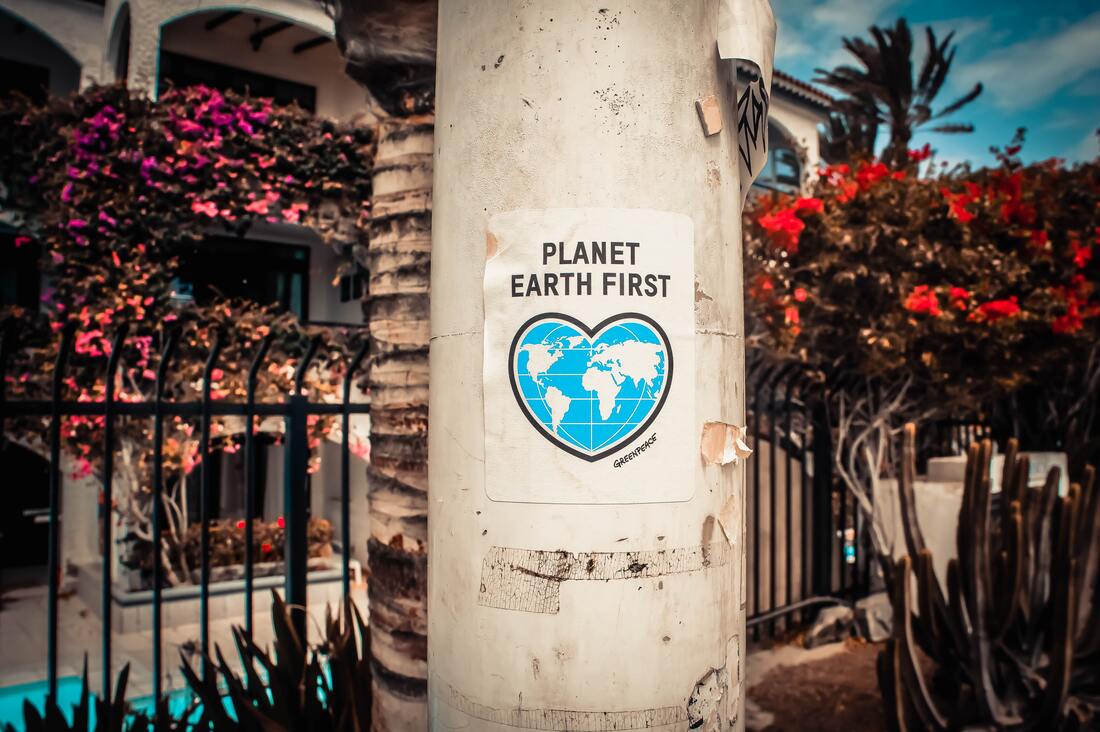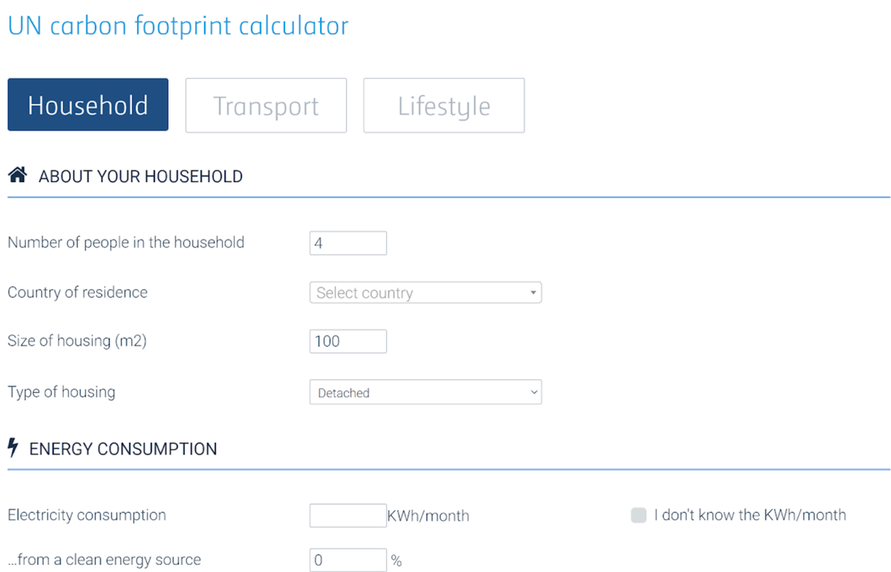Merry mindfulness: sustainability in the holiday season
By Jon Meltzer
December 11, 2021
Image Credit: Courtesy of Photo Boards for Unsplash
With the gift-giving season coming up for various beliefs and creeds, December is a time of conspicuous consumption for many people.
Figures published by Stanford University estimate that Americans’ holiday habits generate 25% more trash between Thanksgiving and New Year’s Day. With a green movement on the College Park campus, many Terps want to know how to behave more sustainably to close out the year.
“It’s not easy [to give sustainably], especially as someone with no money,” said Hunter Savery, a first-year grad student in the Merrill College of Journalism.”I try to look for things a loved one can use over and over again.” Kate Seltzer, another journalism grad student, agreed, saying that she thinks it’s “more important now than ever to take those things into consideration.”
With conflicting information about which habits are greenest, some people find it difficult to take action without second guessing themselves. “The way I see it, we all want to move towards a better world,” said associate professor Giovanni Baiocchi of the geography and economics departments. “People are worried about the economy, you know, if we stop buying certain things, the effect on certain sectors. Slowly, we have to ask for things that are more environmentally sustainable.”
But what are more sustainable things? How can we be confident that our gift giving and receiving will leave the world a better place? The university’s faculty, and the sum of human knowledge that is the modern internet, can help Terps in their decision-making.
Reduce, Reuse, Recycle
As is the case with many greenification efforts, one maxim remains useful as a kind of north star for concerned citizens. “The general principles, I would take from the ‘circular economy,’ the things you usually hear: reducing, reusing, recycling,” said Baoicchi, who is also an associate editor of the Journal of Cleaner Production.
This is a sentiment echoed across the academic disciplines of conservation. According to the Peninsula Sanitary Service and Stanford Recycling: “If every family reused just two feet of holiday ribbon, the 38,000 miles of ribbon saved could tie a bow around the entire planet. If every American family wrapped just three presents in [reused] materials, it would save enough paper to cover 45,000 football fields. The 2.65 billion Christmas cards sold each year in the U.S. could fill a football field ten stories high. If we each sent one card less, we’d save 50,000 cubic yards of paper.”
It doesn’t stop with trim and wrapping paper, either. Shannon Pederson Browne, a lecturer in the department of environmental science and technology, has made entire gifts out of repurposed materials that would otherwise end up in a landfill. “I’ve broken [a big wooden palette] up into smaller pieces, and then reformed it and made signs for my different neighbors and family members.”
Figures published by Stanford University estimate that Americans’ holiday habits generate 25% more trash between Thanksgiving and New Year’s Day. With a green movement on the College Park campus, many Terps want to know how to behave more sustainably to close out the year.
“It’s not easy [to give sustainably], especially as someone with no money,” said Hunter Savery, a first-year grad student in the Merrill College of Journalism.”I try to look for things a loved one can use over and over again.” Kate Seltzer, another journalism grad student, agreed, saying that she thinks it’s “more important now than ever to take those things into consideration.”
With conflicting information about which habits are greenest, some people find it difficult to take action without second guessing themselves. “The way I see it, we all want to move towards a better world,” said associate professor Giovanni Baiocchi of the geography and economics departments. “People are worried about the economy, you know, if we stop buying certain things, the effect on certain sectors. Slowly, we have to ask for things that are more environmentally sustainable.”
But what are more sustainable things? How can we be confident that our gift giving and receiving will leave the world a better place? The university’s faculty, and the sum of human knowledge that is the modern internet, can help Terps in their decision-making.
Reduce, Reuse, Recycle
As is the case with many greenification efforts, one maxim remains useful as a kind of north star for concerned citizens. “The general principles, I would take from the ‘circular economy,’ the things you usually hear: reducing, reusing, recycling,” said Baoicchi, who is also an associate editor of the Journal of Cleaner Production.
This is a sentiment echoed across the academic disciplines of conservation. According to the Peninsula Sanitary Service and Stanford Recycling: “If every family reused just two feet of holiday ribbon, the 38,000 miles of ribbon saved could tie a bow around the entire planet. If every American family wrapped just three presents in [reused] materials, it would save enough paper to cover 45,000 football fields. The 2.65 billion Christmas cards sold each year in the U.S. could fill a football field ten stories high. If we each sent one card less, we’d save 50,000 cubic yards of paper.”
It doesn’t stop with trim and wrapping paper, either. Shannon Pederson Browne, a lecturer in the department of environmental science and technology, has made entire gifts out of repurposed materials that would otherwise end up in a landfill. “I’ve broken [a big wooden palette] up into smaller pieces, and then reformed it and made signs for my different neighbors and family members.”
Gifted signs made by Professor Shannon Browne from discarded materials. Image Credit: Courtesy of Shannon P. Browne
Homemade gifts don’t need to be anything permanent. “Some of my students thought of ideas… such as baked goods or [ready-to-bake] mixes that people can make at home, rather than purchasing an item that may end up in [a] landfill,” said Browne.
Browne’s creativity is mirrored all across the web. This slideshow from Country Living abounds with more items you can make from everyday items we might normally think of as ready for the trash can. Highlights include a wooden candy dispenser and photo art transferred onto reclaimed wood.
Per advice from Browne and Baiocchi, it is always “greener” to use wood that is leftover from past projects for crafts rather than buying new wood from the hardware store - not to mention cheaper. According to data from Business Insider, lumber costs remain 70% higher than pre-pandemic prices.
Beyond the tangible, experiences and memories are guaranteed never to end up in landfills. “We need each other… show that we care by, instead of buying something material, do something together,” says Baiocchi. He advises deeper relationships are often required for a gifted experience to be right for the recipient. Things like concert tickets, museum visits and other group activities can provide treasured memories that last a lifetime.
Technological tools & knowhow
Sometimes, despite our craftiest impulses, we still indulge in online shopping. Data from the National Retail Foundation and Digital Commerce 360 tells us that e-commerce accounted for over a quarter of all holiday shopping in 2020. This year, be ready for the infamous supply chain delays when buying from web retailers.
It’s also important to note that all of the pieces of the logistical shipping puzzle have a significant carbon footprint. A study from MIT’s Center for Transportation and Logistics found that while online shopping may carry a smaller ecological impact than in-person buying, certain behavior patterns can make or break your own shopping footprint. For example, opting to pick up ordered items in-store, rather than shipping directly to your doorstep, can save kilograms of carbon dioxide.
Browne has similar habits that she’s built as an online shopper. Buying everything well ahead of time from Amazon, and opting to have everything shipped at once, rather than more quickly in separate shipments, means “less trucks driving to [her] house and fewer materials used for packaging.”
Beyond this, the websites themselves that we use are worth considering. While Amazon is the most known for its convenience, other sites aggregate the products they carry based on the sustainability of their products and business practices.
Goodonyou.eco has thousands of retailers listed - and ranks each of them based on their treatment of the planet, people, animals and prices. Standouts include tentree, who plants 10 trees for every item sold, and Saya, a hair care line committed to sustainable packaging, environmental stewardship, and paying its Indonesian workers a living wage.
Rethinking the holidays themselves
Some of the ways we celebrate have unintended consequences. Every year, 36 million Christmas trees are chopped down in the United States alone, according to Agronomag. The Carbon Trust advises that a 2-meter fir burned for firewood after the end of the holiday yields 3.5 kg of carbon dioxide in the atmosphere; if sent to a landfill, that number increases to 16 kg. If you can commit to reusing one year after year, an artificial tree could be a more sustainable choice.
String lights can pose a similar ecological conundrum. Be sure to recycle dead lights, says Good Housekeeping, at hardware stores like Home Depot or even certain grocery stores. MOM’s, a chain local to the area, has light recycling boxes at many of its stores.
A gift of lights to a parent or relative who loves the holidays can even be a green choice disguised as a gift. Browne says that LED lights, rather than older compact fluorescent lightbulbs, can save homes and power grids alike lots of energy over years of use - and they last longer.
Holiday travel yields a predictable spike in greenhouse gas emissions every year. Air travel is especially problematic, and the American Automobile Association expects domestic flights to increase by 80% since last year. Driving is greener than flying, and public transportation is even better, but Browne offers another option that’s right in front of us already. “Now that Zoom has become so integrated in our daily lives, why not utilize this technology… and meet with each other virtually?” This solution also decreases the likelihood of contracting or spreading COVID-19 during a time of global pandemic.
“Donations to a good cause, or for carbon reduction” make great gifts, as well, says Baiocchi. Terrapass or the UN-sponsored Climate Neutral Now offer personalized amounts of purchasable carbon offsets; the latter even includes a calculator to determine an individual’s estimated carbon footprint based on lifestyle characteristics.
Browne’s creativity is mirrored all across the web. This slideshow from Country Living abounds with more items you can make from everyday items we might normally think of as ready for the trash can. Highlights include a wooden candy dispenser and photo art transferred onto reclaimed wood.
Per advice from Browne and Baiocchi, it is always “greener” to use wood that is leftover from past projects for crafts rather than buying new wood from the hardware store - not to mention cheaper. According to data from Business Insider, lumber costs remain 70% higher than pre-pandemic prices.
Beyond the tangible, experiences and memories are guaranteed never to end up in landfills. “We need each other… show that we care by, instead of buying something material, do something together,” says Baiocchi. He advises deeper relationships are often required for a gifted experience to be right for the recipient. Things like concert tickets, museum visits and other group activities can provide treasured memories that last a lifetime.
Technological tools & knowhow
Sometimes, despite our craftiest impulses, we still indulge in online shopping. Data from the National Retail Foundation and Digital Commerce 360 tells us that e-commerce accounted for over a quarter of all holiday shopping in 2020. This year, be ready for the infamous supply chain delays when buying from web retailers.
It’s also important to note that all of the pieces of the logistical shipping puzzle have a significant carbon footprint. A study from MIT’s Center for Transportation and Logistics found that while online shopping may carry a smaller ecological impact than in-person buying, certain behavior patterns can make or break your own shopping footprint. For example, opting to pick up ordered items in-store, rather than shipping directly to your doorstep, can save kilograms of carbon dioxide.
Browne has similar habits that she’s built as an online shopper. Buying everything well ahead of time from Amazon, and opting to have everything shipped at once, rather than more quickly in separate shipments, means “less trucks driving to [her] house and fewer materials used for packaging.”
Beyond this, the websites themselves that we use are worth considering. While Amazon is the most known for its convenience, other sites aggregate the products they carry based on the sustainability of their products and business practices.
Goodonyou.eco has thousands of retailers listed - and ranks each of them based on their treatment of the planet, people, animals and prices. Standouts include tentree, who plants 10 trees for every item sold, and Saya, a hair care line committed to sustainable packaging, environmental stewardship, and paying its Indonesian workers a living wage.
Rethinking the holidays themselves
Some of the ways we celebrate have unintended consequences. Every year, 36 million Christmas trees are chopped down in the United States alone, according to Agronomag. The Carbon Trust advises that a 2-meter fir burned for firewood after the end of the holiday yields 3.5 kg of carbon dioxide in the atmosphere; if sent to a landfill, that number increases to 16 kg. If you can commit to reusing one year after year, an artificial tree could be a more sustainable choice.
String lights can pose a similar ecological conundrum. Be sure to recycle dead lights, says Good Housekeeping, at hardware stores like Home Depot or even certain grocery stores. MOM’s, a chain local to the area, has light recycling boxes at many of its stores.
A gift of lights to a parent or relative who loves the holidays can even be a green choice disguised as a gift. Browne says that LED lights, rather than older compact fluorescent lightbulbs, can save homes and power grids alike lots of energy over years of use - and they last longer.
Holiday travel yields a predictable spike in greenhouse gas emissions every year. Air travel is especially problematic, and the American Automobile Association expects domestic flights to increase by 80% since last year. Driving is greener than flying, and public transportation is even better, but Browne offers another option that’s right in front of us already. “Now that Zoom has become so integrated in our daily lives, why not utilize this technology… and meet with each other virtually?” This solution also decreases the likelihood of contracting or spreading COVID-19 during a time of global pandemic.
“Donations to a good cause, or for carbon reduction” make great gifts, as well, says Baiocchi. Terrapass or the UN-sponsored Climate Neutral Now offer personalized amounts of purchasable carbon offsets; the latter even includes a calculator to determine an individual’s estimated carbon footprint based on lifestyle characteristics.
The UN carbon footprint calculator found on Carbon Neutral Now’s website. - Screenshot Credit: Jon Meltzer
Beyond carbon offsets, there are countless environmental advocacy organizations that accept donations, and even offer tokens of thanks like cards that double the bang for one’s gifting buck. Knowing your friend or loved one is again a must for this option, as Baiocchi reminds us, but a donation made in their name to some place like the Rainforest Trust can be very special. You can always use watchdogs like Charity Watch or the Wise Giving Guide to feel safe in your choice of recipient.
“We sometimes perceive that the [climate change] situation might be hopeless with what’s going on,” said Baiocchi. “But I think this opportunity for giving gifts, it reminds us that we are all in this together. We are a society. We need each other.” When every decision we make can have an impact, however small, on the future livability of our planet, we can use the 2021 holiday season to build hope and faith in a greener future for generations to come.
“We sometimes perceive that the [climate change] situation might be hopeless with what’s going on,” said Baiocchi. “But I think this opportunity for giving gifts, it reminds us that we are all in this together. We are a society. We need each other.” When every decision we make can have an impact, however small, on the future livability of our planet, we can use the 2021 holiday season to build hope and faith in a greener future for generations to come.
|
|
Learn more |
© COPYRIGHT 2020. ALL RIGHTS RESERVED.
|



